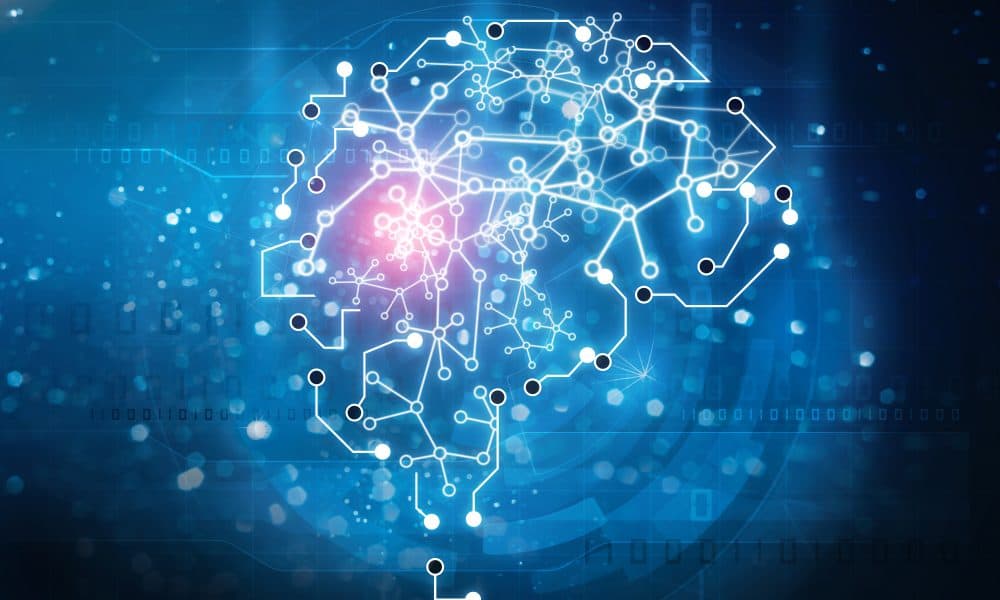
The combination of an ageing population, a lack of collaboration between medical departments and the rising cost of care is creating a perfect storm for European healthcare.
The situation in 2020 was incredibly difficult at the start of the pandemic, but we find ourselves in an even tougher situation now as healthcare systems and individuals attempt to tackle the aftermath.
Healthcare professionals are now having to address a backlog of patients waiting for treatment. With pressure mounting to rectify this, European healthcare systems are at a critical tipping point.
New technology such as AI-powered diagnostics has tremendous potential to address these key challenges and optimise treatment programmes for diseases like cancer.
This technology, integrated into current healthcare systems, can offer quicker diagnosis and streamlined workflows for fast, actionable results.
AI-powered diagnosis can be the future of healthcare, but we still have some way to go in defining AI solutions sophisticated enough for wider use. Current deep learning technology, the underpinning engine in current AI solutions, is limited by the need to have large amounts of diverse data.
To overcome the barriers of understanding more complex and rare diseases, such as different types of cancer, and complex patient anatomies, a more sophisticated AI needs to be developed to assist radiologist’s decision-making process.
With these developments, AI-powered diagnosis has huge potential to improve European healthcare systems, but only if it’s lifted out of the research phase and into mainstream care.
Computers that can ‘see’ disease differently
AI-powered diagnosis describes a process where machines are taught how to recognise diseases through (radiological) image examples.
Experts create datasets where clinicians provide diagnoses for given images. The machine reads the image and tries to ‘see through’ a sequence of numbers. With enough examples, the machine can begin to ‘see’ the patterns that characterise disease.
The work we’re carrying out at the Edinburgh offices of Canon Medical Research Europe demonstrates this technology’s effectiveness in practise.
Here, our teams of software engineers, researchers and computer scientists are working in collaboration with medical professionals to develop transformative technologies on the basis of AI-driven tools that can potentially even make early-stage interventions possible.
By training AI to recognise patterns in mesothelioma cancer, the team has created a system that can measure lesions, and therefore provide clinicians with useful information that informs whether the treatment they’re attempting is actually reducing the tumour over time or not.
The AI provides additional insights that can inform decision-making during the treatment phase, saving valuable time so patients can receive more care and support.
Challenges to using AI in healthcare
While this technology is incredibly useful for supporting clinicians’ decision-making, there are some barriers to it becoming mainstream. The amount and diversity of the data available is the biggest barrier.
For AI to work most effectively, numerous image examples need to be processed to train the machines to recognise disease patterns and validate learnings.
For researchers investigating rare diseases, or illnesses that have changing characteristics, or patients that have less than usual anatomy, this is more complicated.
If examples don’t exhibit consistent patterns, or if there is a lack of examples available, there isn’t enough quality data to validate learnings, and the outcome might not be very useful. In cases like these, a new kind of AI is required.
Emerging in this field is a new kind of AI that can work with less data, and instead of learning by example, it works by understanding what the data is about. Instead of reading patterns, it learns the concepts behind diseases and their characteristics, for a more detailed understanding.
This maturing of AI, especially for healthcare purposes, is what we need to see more of for its deployment to be more widespread and effective. We’re not there yet but finding more ways to respond to these challenges will enable us to use this technology more widely.
Turbo charging clinicians
It’s important to remember that AI in healthcare is a tool used to support clinician decision making – the AI itself doesn’t do the work of a healthcare professional. The AI can be used to better determine the success of a treatment, locate the disease in the body, and understand patterns of certain diseases that can be unpredictable.
For healthcare professionals, it’s important to be able to explain the decisions you make, and AI can facilitate this and enable care teams to do more in providing care and support for their patients.
At Canon, we’re breaking down the traditional patient pathway and integrating AI in each step to speed up the decision-making process. Traditionally, a CT image is taken of the patient, and this image is exported onto a system where an image is sent to a human to make an interpretation.
With AI, we’re intercepting these stages to optimise the image quality and embed AI routines into systems that read the image so radiologists are provided with already interpreted data to support their decision making.
Pushing AI-powered diagnosis into mainstream care
AI-based diagnosis technology has huge potential to revolutionise European healthcare systems and provide rapid response and support in a clinical setting, but we’re not quite there yet. Patients have a huge role to play when it comes to developing this technology past the research phase.
This system is all about data and access to data. As citizens, we have the power to share our data to help support and validate new AI based technologies which will bolster their accuracy in practise.
We also need healthcare professionals to advocate this technology and put their faith into AI solutions to help rectify challenges in the industry, such as diagnosis efficiency. Only then can AI-powered diagnosis come into full effect.





